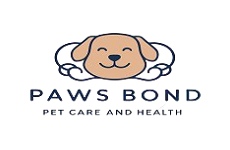Although grains are a common ingredient in dog food, there is continuous discussion regarding their necessity and their effects on dogs’ health. This article explores a number of things related to grains, such as their nutritional worth, possible advantages, and frequent myths. We’ll answer queries concerning grain-free diets, investigate the connection between grains and allergies or canine weight control, and look at the variety of grains included in store-bought dog food. This resource attempts to offer fair perspectives and useful information to assist you make decisions regarding your dog’s food, whether you’re a worried pet owner looking for clarification on disputes around grains or you’re just inquisitive about their place in your dog’s diet.
Adding Grains to Grain-Free Dog Food
Exploring Options for Adding Grains to Grain-Free Dog Food explores the challenges of adding grains to canine diets. Although grain-free dog food has become more and more popular, some pet owners are thinking about reintroducing grains because of worries about the nutritional balance and potential health effects. This tutorial examines different approaches and factors to take into account when adding grains to recipes for grain-free dog food. We’ll look at the practicality and possible advantages of this dietary change, from locating good sources of grains to comprehending appropriate portioning and preparation methods. This article attempts to offer thorough insights and useful advice for improving your dog’s meal plan while preserving general health and well-being, regardless of whether you’re looking to address specific health concerns, vary your dog’s diet, or simply explore new nutritional pathways.
Are Grains Detrimental for Dogs?
Although grains have long been a common element in dog food, there have been worries expressed about the possible harm they could do to dogs’ health. This tutorial explores reasons for and against the addition of grains to dog food, looking at all sides of the issue. We’ll examine anecdotal evidence, professional perspectives, and scientific research to help clarify the possible advantages and disadvantages of grains for dogs. This website attempts to enable pet owners to make educated decisions regarding their dog’s food based on their unique health needs and preferences by offering a thorough and fair review of this contentious topic.
Is Grain-Free Dog Food Unhealthy?
The contentious subject of grain-free dog food is examined critically in “Examining the Issue: Is Grain-Free Dog Food Unhealthy?” Although pet owners looking for alternatives to regular dog food have made grain-free diets more popular, questions have been raised about the possible health effects on canines. This guide looks closely at the data from scientific studies, professional judgments, and anecdotal information to assess whether grain-free foods are harmful to dogs’ health. We hope to give pet owners a thorough grasp of the problem by examining elements including component quality, nutritional sufficiency, and any connections to heart disease. The ultimate goal of this resource is to enable pet owners to make knowledgeable choices regarding the food of their dogs by taking into account both the possible advantages and disadvantages of
Need for Grains in Dog Diets
Misconceptions about the necessity of grains in dogs’ diets are dispelled in “Dispelling Myths: Debunking the Need for Grains in Canine Diets”. Although grains have long been a mainstay of commercial dog food, their necessity for a dog’s diet is up for debate. This tutorial dispels many myths and misconceptions regarding grains, such as the idea that they may support a dog’s digestive system and supply vital nutrients. This resource seeks to give pet owners a better understanding of their options when it comes to selecting the ideal food for their canine friends by dispelling these myths and investigating other nutrition sources, such as protein-rich ingredients and balanced formulations.
Are Grains Safe for Dogs to Consume?
Depending on the dog and their nutritional requirements, grains may be safe for them to eat. While some dogs might benefit greatly from a diet high in grains, other dogs might be allergic to or sensitive to particular grains. In general, grains can supplement a dog’s diet with fiber, carbs, and vital nutrients like vitamins and minerals. But it’s crucial to select premium grains and keep an eye out for any negative side effects, including stomach distress or skin problems, in your dog. The ideal diet for your dog can be determined by speaking with a veterinarian, whether or not grains are included.
Defining Grain-Free Dog Food: What Does It Entail?
Dog food labeled as “grain-free” excludes typical grains including wheat, corn, rice, and barley from their diets. Rather, these dishes frequently make use of substitute carbohydrates such as potatoes, peas, lentils, or tapioca. Grain-free diets are primarily designed to accommodate dogs that have dietary sensitivity to grains or allergies, while also trying to replicate the diet that wild dogs ate in the past. Typically, protein-rich items like meat, fish, or chicken are highlighted as the main source of energy in grain-free dog food. It’s important to remember, too, that grain-free diets are not always better and might not be appropriate for every dog. When choosing a grain-free dog food, it’s important to take your dog’s specific demands, health, and nutritional needs into account, just like with any other dietary decision. Consulting
Exploring the Advantages of Grain-Free Dog Food
The possible advantages of this dietary option for dogs are discussed in investigating the Benefits of Grain-Free Dog Food. It’s common knowledge that grain-free meals are hypoallergenic, which means that dogs with allergies or sensitivity to grains can benefit from them. Furthermore, recipes without grains could have a higher protein content and fewer carbohydrates, which would be more in line with the ancestral diet of dogs. Grain-free foods, according to some supporters, can also aid in a dog’s healthy digestion, lessen inflammation, and enhance general wellbeing. It’s important to remember that different dogs may respond differently to grain-free diets, so it’s best to speak with a veterinarian to be sure a grain-free diet is suitable for your dog’s needs and health.
Is Grain-Free Food Suitable for Puppies?
Puppies may benefit from eating grain-free food, but there are a number of things to take into account before selecting this course of action. Puppies have special dietary needs for healthy growth and development, thus their diet should include all the necessary nutrients in the right amounts. Grain-free diets may have advantages like being hypoallergenic and having more protein, but it’s important to make sure they fulfill the unique nutritional requirements of puppies. Seek out puppy formulas without grains that are especially designed to supply the vital vitamins, minerals, and other nutrients required for a child’s proper growth and development. Additionally, based on your puppy’s unique requirements, health, and any potential dietary sensitivities or allergies, speak with a veterinarian to decide the ideal diet for them
Comprehensive Insights into Grain Varieties
There wide variety of grains that are frequently present in dog food, such as:
Wheat:
Explains the nutritional makeup of wheat as well as its possible advantages and disadvantages when used as a grain ingredient.
Corn:
Examines the use of maize in dog food, talking about frequent misconceptions and its nutritional value..
Rice:
Explains the nutritional worth of the many varieties of rice used in dog food.
Barley:
Focuses on the fiber content and possible health effects of barley for dogs while examining the nutritional advantages of the grain.
Oats:
Explains the benefits of using oats as a dietary source of fiber and carbs for dogs..
Quinoa:
Examines quinoa as a grain substitute, emphasizing its high protein content and possible dog health advantages.
Alternative Grain Sources:
Examines different grain sources and their use in grain-free dog food recipes, including potatoes, peas, lentils, and tapioca.
By looking at various grain types, pet owners can learn everything there is to know about the options available for providing nutrition for their dog.
The Truth behind Grain Allergies in Dogs
Attempts to shed light on the subject of canine grain allergies. Contrary to popular belief, grains are not the most common allergens in dogs. As a matter of fact, dogs are more susceptible to allergic responses when they consume protein-rich foods like eggs, dairy, chicken, and beef. Grain allergies do happen, but they’re not as common as protein allergies. This resource looks at the telltale signs and symptoms of dog grain allergies, how to get a diagnosis, and possible treatments. Pet owners can better understand and manage their dog’s dietary sensitivities and allergies by busting myths and supplying factual information.
Debunking the Myth of Grains Causing Obesity in Dogs
Debunking the Myth of Grains Causing Obesity in Dogs dispels the myth that grains are a major contributor to dog obesity. While eating too many calories and not exercising are the main causes of obesity in dogs, grains may not always cause weight gain. When eaten in moderation and paired with regular exercise, grains can be a part of a balanced diet. This article explores the function of grains in dog diets and explains how they affect weight control. By busting this misconception, dog owners will be better equipped to make decisions regarding their dog’s nutrition and general health, concentrating on the things that actually help them keep a healthy weight.
Evaluating the Cost-Effectiveness of Grain-Free Diets
Understanding Grain-Inclusive Diets: An Overview
An extensive examination of the function of grains in canine nutrition may be found in “Understanding Grain-Inclusive Diets: An Overview.” Traditional grains including wheat, corn, rice, and barley are the main sources of carbohydrates in diets that are grain-inclusive. This article delves into the nutritional worth of grains, their function in supplying vital nutrients, and their possible advantages for canines. It also looks at common misconceptions about diets that include grains and tackles issues with grain allergies and obesity. This review attempts to enable pet owners to make educated decisions about their dog’s food based on their unique needs and preferences by providing a balanced viewpoint on grain-inclusive diets.
Identifying Common Grains Found in Canine Diets:
Wheat: A popular grain that supplies carbs, although some dogs may become allergic to it.
Corn: Another popular grain that is used in dog food; it gives energy and minerals, but some dogs may find it difficult to digest.
Rice: Simple to digest and a common ingredient in hypoallergenic diets, this food source offers nutrients and carbohydrates.
Barley: A wholesome grain that is rich in fiber and minerals and is frequently included in dog food because of its many health advantages.
Oats For many dogs, oats are a healthful grain option that promotes digestive health because they are high in fiber and minerals.
Conclusion
Giving dogs the best nutrition possible and attending to their dietary needs require an understanding of the place of grains in canine diets. Although grains are a great source of nutrients and energy, some dogs may have allergies or digestive problems as a result of eating grains. Grain inclusion or exclusion in a dog’s diet should be determined by the needs, preferences, and health of the particular animal. Pet owners can make educated decisions to support their dog’s general health and wellbeing by weighing the advantages and possible disadvantages of grain-inclusive and grain-free meals. In the end, maintaining a dog’s health and lifespan primarily depends on feeding them a well-rounded, nutrient-rich food that is catered to their individual needs.










